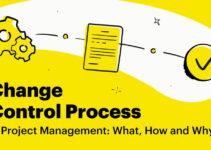You’re planning to implement new technology, software, or a new system into your organization to improve efficiency and growth. It offers a lot of opportunities for the company to increase its growth and productivity. The change initiative would be useless if the employees and team members don’t comprehend, value, and adopt the changes. Companies should develop a comprehensive communication for the change initiative. Today, we’ll discuss how to avoid common mistakes in change management.
Avoid Common Mistakes in Change Management
Let’s discuss how to avoid common mistakes in change management; they’re as follows;
No Comprehending the Need for Change
The employees and team members need to comprehend the reason behind the change project. It allows them to become more productive, perform their job more easily, improves the company’s profitability, and results in the form of better job compensation. However, if the need and reason for the change project are not compelling, they won’t participate in the action plan.
If you don’t have the excitement and are not careful about the change initiative; soon the change project will fail. It is not the type of change initiative that your clients, stakeholders, and customers want to see.
The management and the change leaders should employ multiple communication channels like presentations, emails, memos, and one-on-one meetings to explain the reason and rationality behind the change project. Using multiple communication channels would inform employees about the change project, and make sure not to overwhelm them with a lot of information.
Unclear Vision
It is significant to envision the future and how the company would look after executing the changes. The change initiative can go to a speedy and quick start with a lot of excitement from the people. If the employees and team members don’t envision the future and the destination, then the excitement of the change project will fade away quickly. They won’t put all of their efforts and energies into implementing the changes if they aren’t fully aware of it.
For instance, if the change initiative focuses on improving the customer support service; then you need to make things clear about what type of changes and improving how. The quantifiable metrics would be reducing the order processing time from five to two or one day. Lower order processing time increases the customer satisfaction level.
No Tools, Support, and Capacity to Change
Employees have a lot on their plate of daily roles and responsibilities, so you should avoid bombarding them with the change information. It is significant to make sure that they have relevant skills, expertise, and resources to deal with the changes. If they don’t have the relevant skills and resources, then it amplifies the stress and anxiety level among them. You should avoid surprising employees if there is some potential employee turnover.
For instance, if you are introducing a new accounting system into the organization, then make sure to conduct training programs to improve their knowledge and expertise. Effective and efficient change management programs won’t happen overnight.
Lack of a Strong Action Plan
If the company doesn’t have a proper and comprehensive change action plan, employees won’t know what the change initiative is and how it will happen. Envisioning the change initiative and reaching the change destination becomes much simpler and easier if you have a clear and well-developed step-by-step roadmap for change. Without having a clear direction of the change initiative, the initial excitement of the change project would fade and the change initiative would go nowhere.
Companies should bring some key stakeholders on board with the change initiative; develop a comprehensive change action plan and share it across the company. They should regularly analyze the status report to check whether the change project is going on track or not.
Limited Communication
Often change leaders make the mistake that their communication lacks the details and they don’t target the right people affected by the change project. Open and honest communication plays a key role in building the trust and confidence of employees and earning their commitment to the change initiative. However, the change leaders communicate too little or too late; it keeps employees in the dark about the change project.
No Participation of Stakeholders
Change leaders and managers who have a lot of stake in the change project, they don’t fully involve in the change initiative. Some of the main stakeholders involved in the change project are suppliers, partners, regulators, customers, employees, vendors, and others. By not involving the relevant stakeholders in the change project, it amplifies the risk of employee resistance toward the change initiative.
No Protocol for Feedback
The change managers don’t gather the feedback of employees and team members affected by the change. In fact, they should set up clear change measuring indicators to evaluate the performance of employees and team members. Their feedback would let the managers know how the change project is performing.
Conclusion: How to Avoid Common Mistakes in Change Management |Change Management Mistakes You’re Making
After an in-depth study of how to avoid common mistakes in change management; we have realized that change mistakes disrupt the flow of a change project. If you are learning about the change mistakes you’re making; then you should keep in mind the abovementioned elements, factors, and suggestions to deal with them.
Ahsan is an accomplished researcher and has a deep insight in worldly life affairs. He goes Live 3 days a week on various social media platforms. Other than research writing, he’s a very interesting person.


